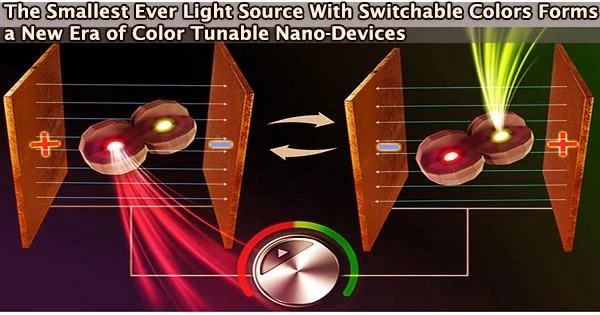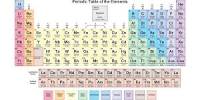Although nanocrystals may change their color and are utilized in many different technologies, it is currently not possible to flip between colors dynamically because distinct nanocrystals must be used for each color.
A team of Researchers at the Institute of Chemistry and The Center for Nanoscience and Nanotechnology at The Hebrew University of Jerusalem, including graduate student Yonatan Ossia with seven other members, and led by Prof. Uri Banin, have now come up with an innovative solution to this problem.
Fast and instantaneous color switching was accomplished by creating a system of a “artificial molecule” comprised of two connected semiconductor nanocrystals that produce light in two different colors.
Many crucial modern technologies, including lighting, displays, rapid optical fiber communication networks, and more, are based on colored light and its tunability. Upon taking color emitting semiconductors to the nanoscale (nano one billionth of a meter, one hundred thousand times smaller than a human hair), an effect called quantum confinement comes into play: changing the size of the nanocrystal modifies the color of the emitted light.
Thus, bright light sources can be obtained covering the entire visible spectrum. They are now widely utilized in high-end commercial displays, offering them exceptional color quality and significant energy saving properties thanks to the unique color tunability of such nanocrystals and their simple synthesis and manipulation using wet-chemistry.
However, to this day, achieving different colors (such as needed for the different RGB pixels) required the use of different nanocrystals for each specific color, and dynamical switching between the different colors was not possible.
Even though single colloidal nanocrystals that behave as “Artificial atoms” have been studied and used in prototype optoelectronic devices, actively changing colors has proven difficult because the effect naturally reduces brightness and only produces a slight shift in color.
Our research is a big leap forward in nanomaterials for optoelectronics. This is an important step in our exposition of the idea of ‘nanocrystal chemistry’ launched just a few years ago in our research group, where the nanocrystals are building blocks of artificial molecules with exciting new functionalities. Being able to switch colors so quickly and efficiently on the nanoscale as we have achieved has enormous possibilities. It could revolutionize advanced displays and create color-switchable single photon sources.
Professor Uri Banin
By developing a unique molecule with two emission centers, the research team was able to overcome this constraint. This molecule allows an electric field to regulate the relative emission from each center, changing the hue while maintaining brightness. The artificial molecule can be made such that one of its constituent nanocrystals is tuned to emit “green” light, while the other “red” light.
This new artificial molecule emits light in both red and green, and its emission is sensitive to the external voltage that induces an electric field. If the field is switched from one polarity to the other, the color emission instantly switches from red to green, and vice versa.
Due to the lack of molecular structural mobility, this color flipping phenomenon is immediate and reversible. By adding the proper voltage to the gadget, it is possible to obtain any combination of the two colors, or any one of the other two.
Nanoscale optoelectronic devices with adjustable colors, displays, lighting, and sensitive field sensing for biological applications and neuroscience to monitor brain activity are just a few of the new possibilities made possible by the ability to precisely control color tuning in optoelectronic devices while maintaining intensity.
Moreover, it allows to actively tune emission colors in single photon sources which are important for future quantum communication technologies.
Prof. Uri Banin from the Hebrew University of Jerusalem explained, “Our research is a big leap forward in nanomaterials for optoelectronics. This is an important step in our exposition of the idea of ‘nanocrystal chemistry’ launched just a few years ago in our research group, where the nanocrystals are building blocks of artificial molecules with exciting new functionalities. Being able to switch colors so quickly and efficiently on the nanoscale as we have achieved has enormous possibilities. It could revolutionize advanced displays and create color-switchable single photon sources.”
Such quantum dot molecules with two emission centers enable the production of multiple distinct colors of light from a single nanostructure. This innovation makes it possible to create sensitive tools for identifying and measuring electric fields.
As a result, the traditional RGB display design can be simplified to use fewer pixels, which could improve the resolution and energy efficiency of future commercial displays. It also enables novel display designs where each pixel can be individually controlled to produce distinct colors.
This development in electric field-induced color switching has the potential to significantly alter field sensing and device customization, opening the door for exciting new developments in the future.
















